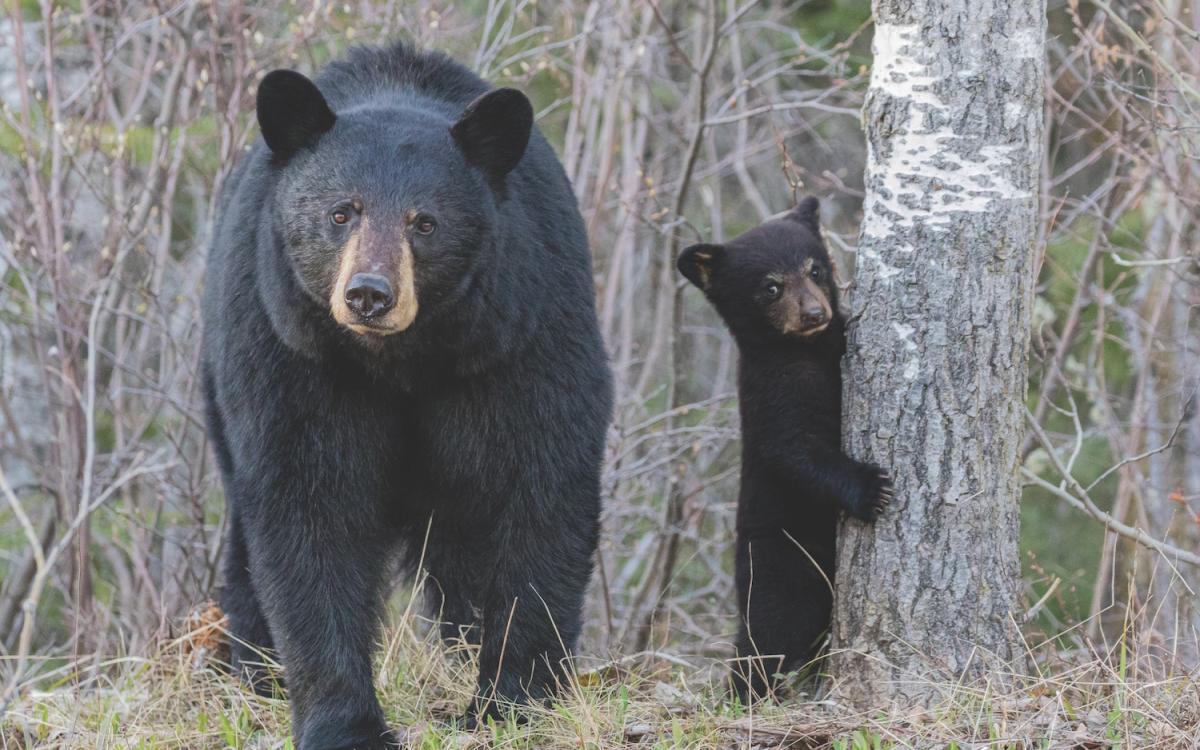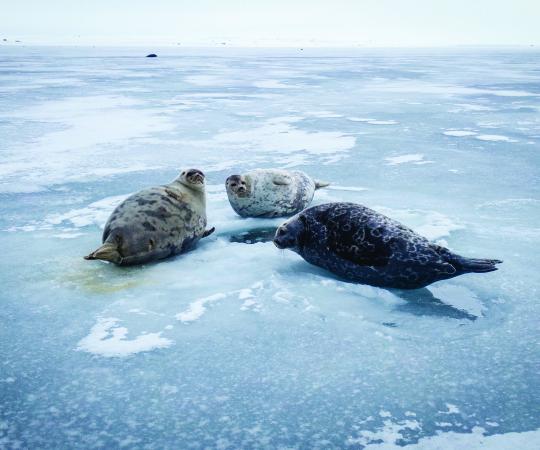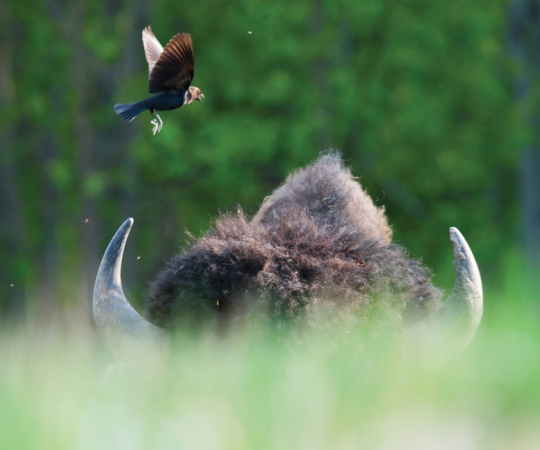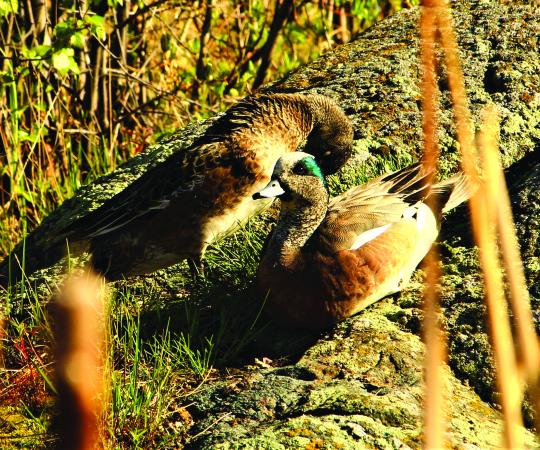One September day two years ago, a black bear and her three small cubs wandered onto a front lawn in Whitehorse’s Riverdale neighbourhood, drawn to the house’s chokecherry tree. Conservation officers (COs) quickly showed up to tranquilize the bears and relocate them, while the RCMP cordoned off the street with yellow tape.
“It was a bit of a rodeo,” says Aaron Koss-Young, one of the COs on scene that day. “We were quite concerned with traffic control with an aggravated sow running around.”
This mama is Grey Mountain’s best-known bear. If you hike, run, or bike on its extensive trail network, chances are you’ve spotted her, with three cute cubs in tow. Living on the edge of Whitehorse, as she does, is a precarious existence. Her home trails are popular with the two-legged kind, plus there’s the allure of garbage and compost in nearby Riverdale. And yet her story is, so far, a testament to how bears and humans can coexist in a city surrounded by wilderness.
The fall of 2018 wasn’t her first rodeo. She had trekked back to Whitehorse that September just two weeks after COs relocated her and her cubs a first time to the wilderness near Fox Lake—about an hour away.
In late August, the bear family had frequented yards on nearby Wickstrom Road, climbing into trees and eating chokecherries. Conservation officers caught the mother in a trap, then used darts to tranquilize the cubs, who tumbled out of a tree onto a mattress positioned to cushion their fall.
“It was always fun trying to wrangle them. I got defecated on a couple times,” Koss-Young says with a laugh. “Like getting a pie in the face.”
After the Riverdale incident, Mama and her cubs were relocated again, this time by helicopter, across the Yukon and Teslin Rivers and over a mountain range. This was a lot of effort—and expense—for a family of repeat offenders. But COs decided it was worth it. Though the bruins could’ve easily gotten into garbage or compost and become “problem bears,” they’d so far focused on natural food sources, like berries. And the mother wasn’t aggressive when she encountered humans, often running away at the sight of them. “It was a good bear to put some extra effort into,” Koss-Young says.
He first got acquainted with this particular animal in 2012, when she wandered down Grey Mountain into Riverdale for what may have been the first time. Perhaps she’d recently been pushed out on her own by her own mother. She sniffed around compost bins in backyards along the green belt, but didn’t find much to eat.
Out of caution, conservation officers relocated her, fitting her with an ear tag so she’d be identifiable if she wandered into town again. Over the next five years, she didn’t. The bear stayed on Grey Mountain, where she raised at least two litters of triplets. She has had a couple of defensive run-ins with people, Koss-Young says, like when an off-leash dog harassed her and her cubs. She responded by chasing the dog back to its owner. But otherwise, she’s kept to herself.
Since 2018—a summer that saw a poor berry crop and a record number of bear-human conflicts in the Yukon—the mama had steered clear of residential areas, though she was spotted frequently by trail users on Grey Mountain and at Hidden Lakes. She has two yellow tags now, one in each ear. And she’s got a couple of identification numbers, which Koss-Young won’t reveal for security reasons. But he and the other COs sometimes affectionately refer to her as the Berry Tree Bear.
This summer, however, Whitehorse Facebook groups have been particularly active with posts about Yukoners running into the mountain mama—and three tiny new cubs—while hiking and biking on Grey Mountain. In early August, a sow and cubs were spotted in Riverdale, on the greenbelt—likely the same family, though Koss-Young couldn’t confirm.
Unlike the people she runs into, the bear hasn’t seemed bothered by these encounters. “The times I’ve seen [her], she just looks at me and goes about her business,” says Meagan Wilson, the trail crew leader at the City of Whitehorse.
In the nine years she’s been building trails for the city, Wilson says she’s seen a significant increase in the number of people using them. She thinks this is why bear sightings on Grey Mountain seem more frequent now than they used to.
“This has been their habitat for so long—just maybe we weren’t in it as much or there were fewer people using it,” she says. “And also people weren’t saying when they saw a bear on social media.”
It’s a delicate coexistence. We live where we do because we value wilderness, but our use of the outdoors affects the wildlife that call it home. More people on the trails means more encroachment and disruption for bears.
So far, though, this sow has taken the humans traipsing all over her habitat in stride. “A bear that’s been routinely exposed and not had negative encounters with people—it becomes habituated,” says Koss-Young. “And it doesn’t mean that they’re a bad bear. It just means that they are the kind of bear that you could ride your bike by and not even realize, and the bear might not even lift its head up to stop feeding.”
He hopes she doesn’t wander back into Riverdale intent on finding high-calorie food sources as she gets older. That could lead to her demise. “I don’t know of any other situation in my entire career [where we] dealt with a bear in this way,” he says. “She’s quite unique.”









